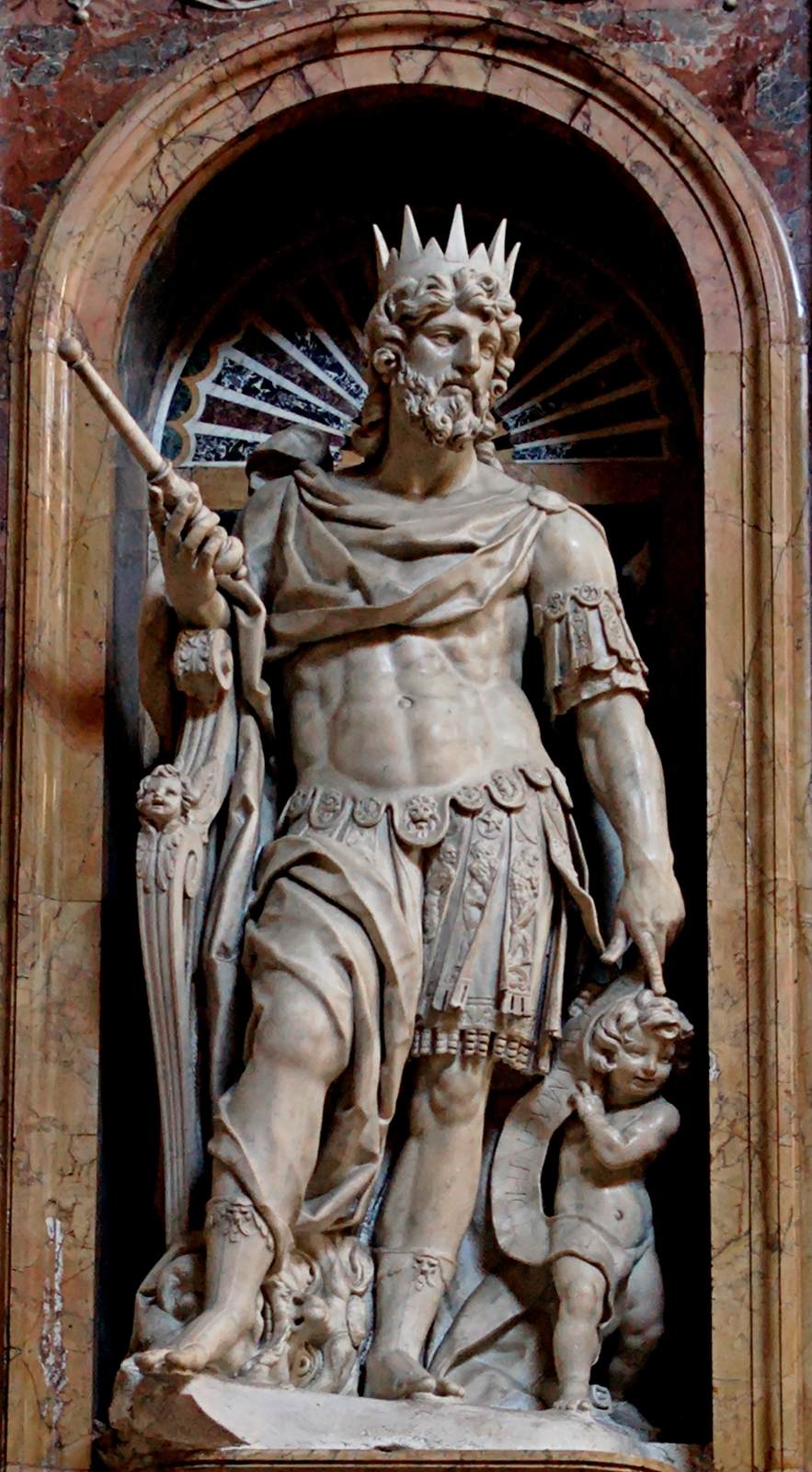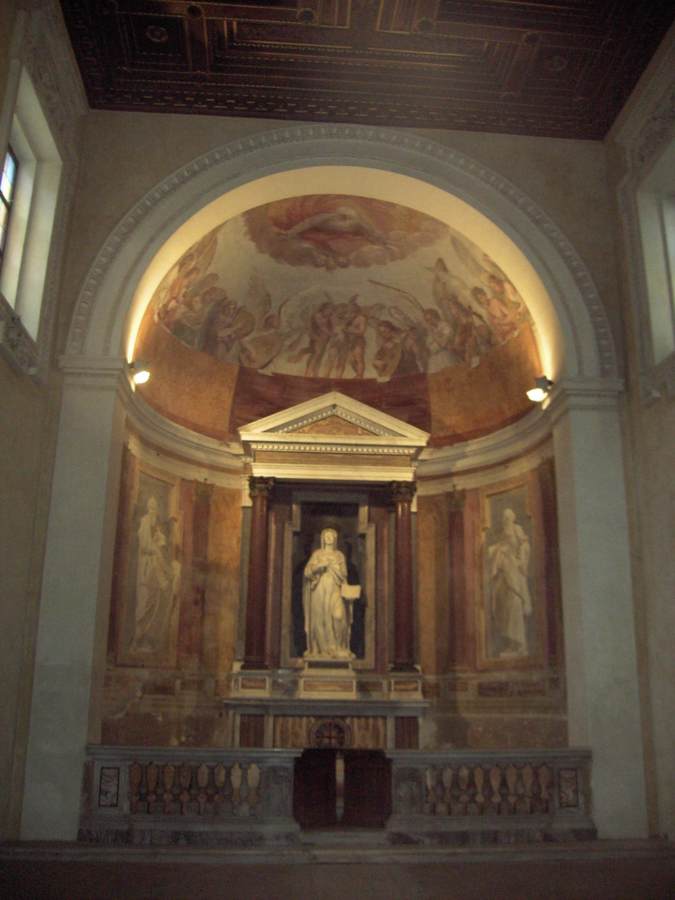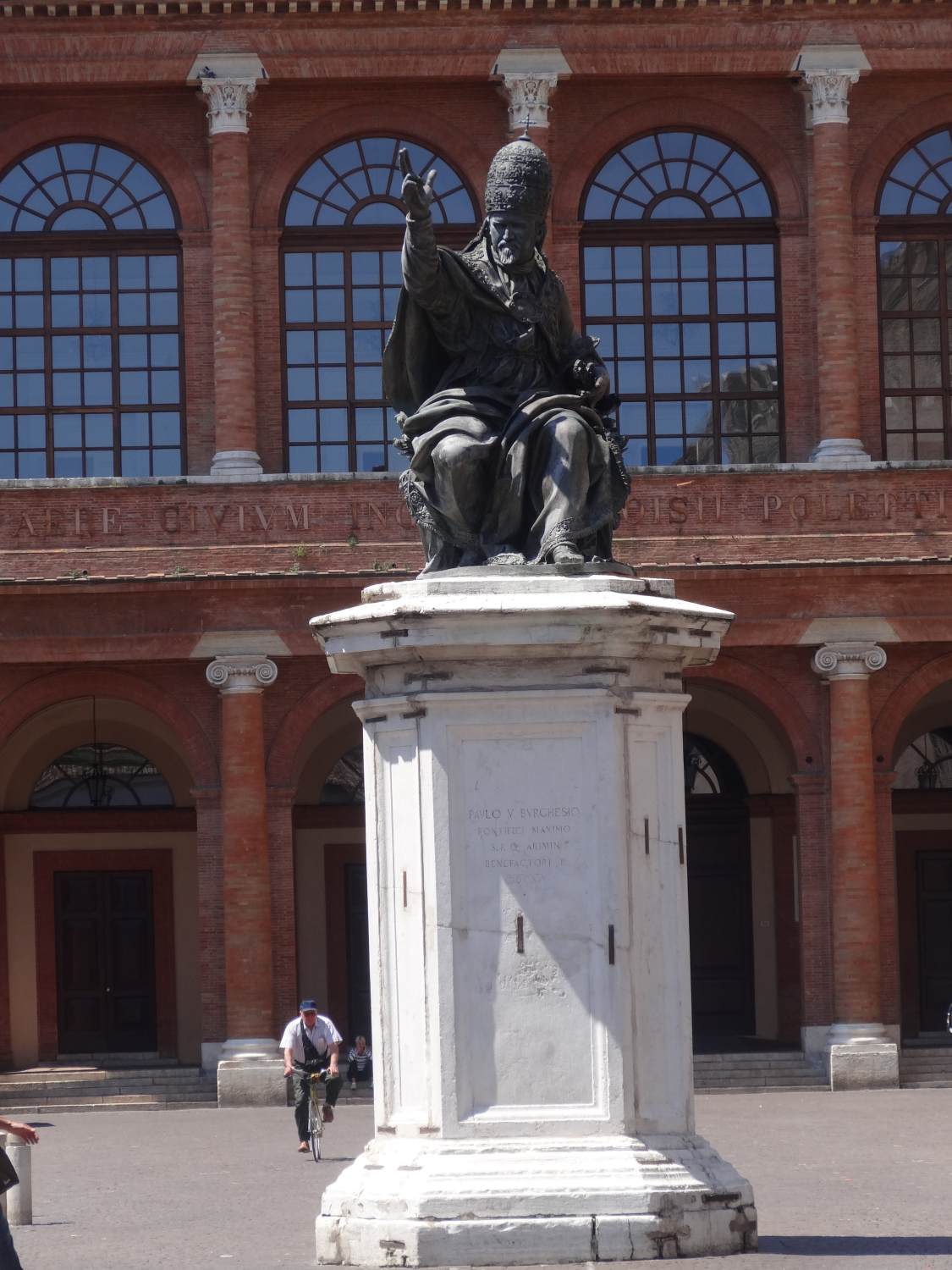French sculptor and painter, active also in Italy. He trained at Saint-Mihiel in the workshop of the Richier family, where he learnt the late Mannerist style current in Lorraine and much of northern Europe at the end of the 16th century. By c. 1590 he was working for Duke Charles III of Lorraine at Nancy, where he executed sculpture in wood (untraced). Late in 1592, at the expense of Charles III, he left for Rome, where he remained for the rest of his life.
Baglione reported that Cordier worked in wood in Rome, but by 1600 he had acquired sufficient reputation as a sculptor in marble to take part in Clement VIII's decoration of the interior of San Giovanni in Laterano, for which he carved a marble high relief of an angel for the south transept. Stylistically it shares the traits of debased Mannerism common to many northern sculptors working in Rome. His first important works were a seated marble statue of St Gregory (1602) and a standing marble statue of St Sylvia (1604), both in San Gregorio Magno. The St Gregory was, according to Cordier's first biographer Baglione, carved from a block that had been roughed out and abandoned by Michelangelo. Both works show Cordier, inspired by Antique and Renaissance prototypes, moving towards a style more harmonious in composition and more expressive in sentiment. In a period between the death of Michelangelo and the emergence of Bernini conspicuous for its dearth of sculptural talent, Cordier began to enjoy a considerable reputation among Roman patrons. He contributed to a number of major sculptural schemes including the Aldobrandini Chapel, built by Clement VIII in Santa Maria sopra Minerva, where he carved statues of St Sebastian and Charity as well as the imposing recumbent funerary effigies of the Pope's parents, Silvestro Aldobrandini and Lesa Deti (marble; 1604–8), and Paul V's Cappella Paolina in Santa Maria Maggiore, for which he executed the restrained and conventional statues of Aaron, David, Dionysius the Aeropagite and St Bernard (marble; 1609–12).
Cordier also produced models for casting in bronze, which demonstrate both freedom and finesse in their handling. In 1604 he made the grille for the principal altar in St Peter's (in situ, but rearranged). His colossal bronze statues of Henry IV of France (1606–9; Rome, San Giovanni in Laterano) and Paul V (1611–14; Rimini, Piazza Cavour), with their lively gestures and meticulous treatment of contrasting surface detail, are among his most impressive works.
Active as a restorer of antique sculpture, he added heads and hands to the marble group of the Three Graces (Paris, Louvre) for Cardinal Scipione Borghese, and at some time between 1607 and 1612 he made up for the same patron polychrome statues of a Moor (black marble and alabaster heightened with gilding; Versailles, Château) and a Gypsy Girl (white and coloured marbles and bronze; Rome, Galleria Borghese), using antique torsos as a base.
A number of unfinished canvases was found in his studio at his death, and he may have painted portraits and historical subjects; no paintings by his hand have been identified, however.
//
![]()









